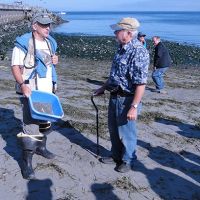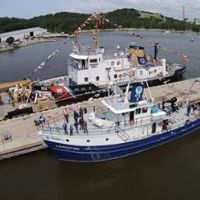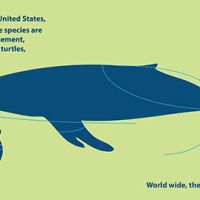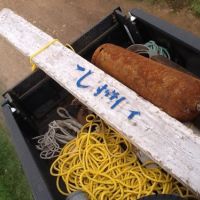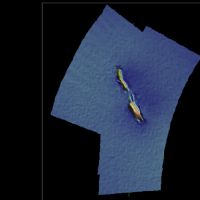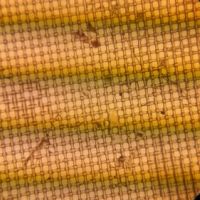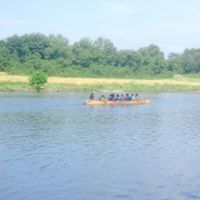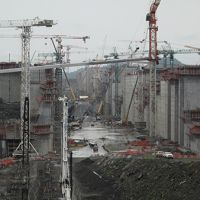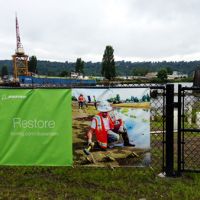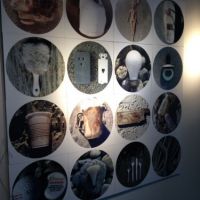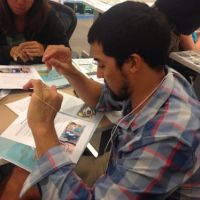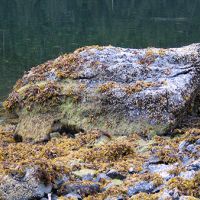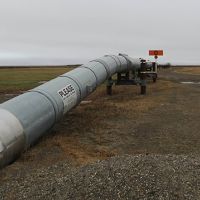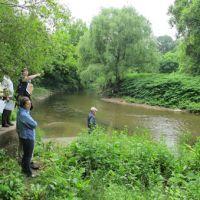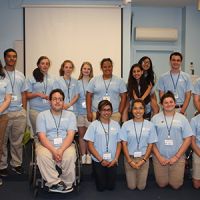JUNE 3, 2024 — On May 13, 2024, the United States District Court for the Western District of Washington finalized a settlement with Crowley Marine Services, Inc. (Crowley), 8th Avenue Terminals, Inc. and the Washington State Department of Transportation (WSDOT). The settlement is on behalf of the Elliott Bay Trustee Council, which includes NOAA, the U.S.
OR&R Weekly Report
The Office of Response and Restoration publishes this weekly round-up of news and information of interest to our partners, stakeholders, and team members. Click to subscribe
August 2014
A field trip, part of the Science of Oil Spills (SOS) class conducted by OR&R in Seattle during the week of August 4, 2014, featured a presentation by local marine biologist and citizen scientist Michael Kyte on on "Sea Star Wasting Syndrome."
The NOAA Research Vessel Laurentia , spent July 28 to August 2, 2014 with the crew and three NOAA Corps Officers at the U.S. Coast Guard (USCG) Festival in Grand Haven, Michigan.
The week of August 4, 2014, the NOAA Marine Debris Program and the National Centers for Coastal Ocean Science published reports that assess the current state of science on two marine debris impacts: ingestion and entanglement.
On August 1, 2014, a perfect Seattle summer day, NOAA Vice Adm. Michael Devany visited the recently completed shoreline restoration on the Duwamish River constructed by the Boeing Company.
The Northwest Scientific Support Coordinator met with tribal representatives from the Quinault, Makah, Hoh, Shoalwater Bay, and Quileute tribes the week of July 28 discuss the update to the Environmental Sensitivity Index (ESI) maps for the outer Washington and Oregon coastlines.
Emory Wellman, OR&R’s Constituent and Legislative Affairs intern, presented her research into storm protection and its incorporation in Natural Resource Damage Assessments (NRDAs).
The NOAA Marine Debris Program funded two research projects with recently published papers to better understand the regional derelict trap issue in the Southeast. The projects focused on derelict lobster traps in the Florida Keys and derelict fish traps in the U.S. Virgin Islands.
July 2014
The week of July 21, 2014, a large wooden sign that was once part of the Japanese village of Tanohata went home, thanks to collaboration between the NOAA Marine Debris Program, the State of Hawaii, Hawaiian Airlines, and Japanese officials.
NOAA's Western Regional Center campus hosted two weeks of science camp for junior high students.
Building on a project initiated with the Disaster Response Center in 2012, the Jacques Cousteau National Estuarine Research Reserve (JC NERR) kicked off its Disaster Response Planning on Wednesday.
As federal leaders in oil spill response science, NOAA’s Office of Response and Restoration is grateful for each oil spill which does not take place, which was fortunately the case on July 24, 2014 in Seattle, Washington, near our west coast office.
On July 15, 2014, a fisherman filed a report after observing an unknown sheen from an unknown source in ocean waters approximately 48 miles offshore of Cape Lookout, NC.
On July 23, 2014, Dave Westerholm testified before the House Committee on Transportation and Infrastructure's Subcommittee on Coast Guard and Marine Transportation during a hearing entitled "Implementing U.S. Policy in the Arctic".
The NOAA Marine Debris Program is funding four new research projects on innovative gear technology to reduce the loss of fishing gear, such as crab traps and pots, at sea and reduce the impacts of lost gear through the program's Fishing for Energy partnership with the National Fish and Wildlife Foundation.
The annual North Atlantic Regional Collaboration Team (NART) meeting on June 8-9, 2014, was held at the Norrie Point Environmental Center, part of the Hudson River National Estuarine Research Reserve.
The week of July 7, 2014, the NOAA Marine Debris Program (NOAA MDP) participated in a week-long Marine Debris Teacher Workshop in Savannah, Georgia. The workshop was organized by the University of Georgia Marine Extension Service through Project SORT, a NOAA MDP FY 2013 Prevention through Education and Outreach Partnership grant. Fifteen educators from Georgia, North Carolina, and South Carolina attended a four-day workshop to learn how to incorporate marine debris science into their curriculum.
The NOAA Disaster Response Center hosted the Gulf of Mexico Regional Collaboration Team for their two day meeting on July 1-2, 2014.
NOAA’s Office of Response and Restoration and National Centers for Coastal Ocean Science (NCCOS) jointly held a Dispersed Oil Effects Research Collaboration Meeting at the NOAA Sand Point campus in Seattle on Thursday, July 11, 2014.
On Saturday, June 28, 2014, at the River and Roots Festival in Berryville, Virginia, NOAA staff led an environmental education workshop to teach festival-goers of all ages about the sources of marine debris and non-point source pollution and how actions upstream affect creeks, rivers, and ultimately our coastal ecosystems.
Dr. Amy Merten and CDR Elizabeth Kretovic participated in the EPPR Arctic Council's Working Group meeting in Ottawa, Canada. EPPR addresses prevention, preparedness and response to environmental emergencies in the Arctic.
On June 26, 2014, OR&R Regional Resource Coordinator Simeon Hahn participated in a kick-off event for Great Outdoors America Week at Bladensburg Park on the Anacostia River in Maryland and Washington, D.C.
In accordance with the Memorandum of Agreement (MOA) between the Panama Canal Authority and the U.S. National Response Team, an annual exercise known as EcoCanal and associated training took place in Panama City, Panama, during the week of June 23, 2014.
June 2014
On June 17, 2014, NOAA spoke at a celebration event on the newly restored banks of the Lower Duwamish River near Seattle.
The NOAA Marine Debris Program, along with the NOAA Restoration Center, organized an exhibit at the Greater Atlantic Regional Fisheries Office (GARFO) featuring local artwork created from marine debris.
Recently, the OR&R Marine Debris Program (MDP) participated in a One NOAA Pacific Region Education Showcase organized by the Pacific Services Center in Hawaii.
During a minus tide on June 25, 2014, Dr. Rob Campbell, biological oceanographer from the Prince William Sound Science Center (PWSSC) visited Knight Island in Prince William Sound.
On June 17-19, 2014, a team of OR&R staff traveled to Deadhorse, Alaska, to participate in a North Slope orientation visit and tour of Alaska Clean Seas facilities.
On June 9, 2014, OR&R Assessment and Restoration Division staff visited the locations of restoration projects implemented after the 2004 M/T Athos I oil spill.
Ken Finkelstein co-led a two day Natural Resource Damage Assessment short course on June 10-11, 2014, at the University Of Massachusetts, Amherst conference center.
The NOAA Marine Debris Program (MDP) participated in the Teen Marine Debris Summit - a two-day workshop for students to find solutions for preventing marine debris from entering our oceans.


